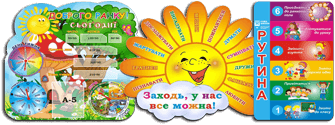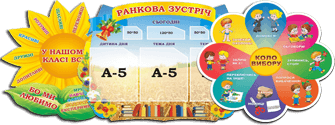Конспект відкритого уроку з англійської мови в 4 класі на тему “Відпочинок і дозвілля”
Автор: вчитель англійської мови Ковальчук Олена Олексіївна
Урок застосування знань, умінь і навичок в 4-му класі. Поєднує закріплення, вдосконалення та контроль знань з лексичного та граматичного матеріалу, що вивчався в межах мовленнєвої теми «Відпочинок і дозвілля». А саме активізація лексики типу play computer games, watch TV, read books,play with friends, go hang-gliding or scuba diving, do gymnastics or martial arts; тренування граматичного часу Present Simple та прислівників частотності в мовленнєвих зразках типу “What do you usually do on Saturday morning?- I usually get up at 9 o’clock….”? “Do you like hang-gliding?- Yes, I do. I think it’s interesting; розвиток фонетичних навичок та фонематичного слуху; розвиток навичок читання із повним розумінням тексту; розуміння загальної та детальної інформації.
Тип уроку: урок застосування знань, умінь і навичок.
Тема уроку: «Відпочинок і дозвілля»
Освітня мета:
– розширення кругозору учнів;
– залучення учнів до активної групової діяльності;
– формування комунікативної поведінки.
Розвиваюча мета:
– розвивати фонематичний слух;
– розвивати в учнів пам’ять, увагу;
– формувати навички логічного мислення,
– вчити цілісності висловлювання;
– розвивати культуру спілкування в ситуації.
Виховна мета:
- навчати навичкам взаєморозуміння;
- формувати почуття відповідальності при роботі в парі;
- виховувати інтерес до англійської мови як засобу спілкування.
Практичні цілі:
- активізація вивченого лексичного матеріалу з теми;
- розвиток фонетичних навичок та фонематичного слуху: вимова звуків, слів, фраз, мовленнєвих зразків у реченнях, віршах.
- розвиток навичок читання із залученням мовної здогадки; розуміння загальної та детальної інформації;
- тренування граматичних зразків типу “What do you usually do on Saturday morning?- I usually get up at 9 o’clock….”? “Do you like hang-gliding?- Yes, I do. I think it’s interesting.”
- розвиток мовленнєвих навичок в діалогах, коротких монологах та відповідях на питання.
Обладнання та матеріали:
– комп’ютер;
– роздатковий матеріал (картки з малюнками; картки з активною лексикою);
– підручник Welcome III PB;
– CDдо підручника Welcome III PB.
Хід уроку
I. Введення в іншомовну атмосферу
1.Привітання
T: Good morning, pupils!
P: Good morning, teacher!
T: I’m glad to see you!
P: We’re glad to see you, too!
T: How are you?
P: We’re fine, thank you. And how are you?
T: I’m fine, too, thank you. Sit down, please.
2. Мета
T: So pupils, today we are going to :
- Act out the dialogues.
- Practise the grammar (Present Simple).
- Revise the vocabulary: write the word dictation.
- Read the text (“Sumo wrestling”).
3. Фонетична зарядка
T: Before we start our lesson let’s make our mouths speak English
- Repeat the sounds and words :
[w], [ᶞ]
Whether the weather be fine
Or whether the weather be not
Whether the weather be cold
Or whether the weather be hot
We’ll whether the weather
Whatever the weather
Whether we like it or not
- What’s the weather like today? Do you like such weather?
- Repeat the words : Every – every week-every week has 7 days
Every week has 7 days,
See how many you can say.
Sunday, Monday,
Tuesday, Wednesday,
Thursday, Friday,
Saturday. What’s today?
II. Основна частина уроку
1. Активізація лексики
T: What’s the day today?
P1: It’s Saturday.
T: Do you go to school on Saturdays?
P2: No, I don’t.
T: What do you usually do on Saturdays mornings?
P3: I usually get up at 9 o’clock, make the bed and have breakfast.
T: What do you usually do on Saturdays afternoons?
P4: I usually visit my grandparents, go to the park and walk the dog.
T: What do you usually do on Saturdays evenings?
P5: I usually play computer games, watch TV, read books and play with my friends.
2. Діалогічне мовлення
3. Розвиток граматичних навичок
T: What time do we use in dialogues? How do we form affirmative, negative, question forms?
Present Simple run

T: With Present Simple we use always, usually, often, sometimes, never. Where does the word “always” go in affirmative? (“usually” in negative, “often” in questions)?
T: Now let’s write short GRAMMAR TEST
- Put the verbs in brackets into the Present Simple. Write down.
- Tom and Pete always … (tidy) their room on Saturdays.
- In the afternoon Nicholas … (not go jogging).
- … you usually … make the bed in the morning?
- Choose and circle.
- Ann … at home in the evening.
A often watch TV B often watches TV C watches TV
- We ……. our uncle at the weekend.
A don’t visit usually B don’t always visit C not always visit
- My sister … the bus to school.
A sometimes catches B sometimes catch
C catches sometimes
- How … go home?
A does you usually B you do usually C do you usually
- Tom … on Saturdays.
A often go shopping B oftens go shopping C often goes shopping
- Jeans … at 7:00
A always get up B always gets up C. gets up always
T: Let’s have a rest. Stand up, speak and show.
I like to read,
I like to play,
I like to study every day,
I like to jump,
I like to run,
I like to play,
It is fun.
4. Закріплення лексичних навичок на письмі
T: Do you like to play?
P1: Yes, I do.
T: Do you like sports and activities?
P2: Yes, I do.
T: What sport or activity do you like?
P-s: I like hang- gliding and scuba diving.
T: Good. Now look at the blackboard. You can see the transcriptions of the words. Match the transcription, word and picture. (Pupils go the blackboard and match the appropriate word and picture to the transcription).

T: Take the sheets of paper and write the words:
Bowling 2. Scuba diving 3. Gymnastics 4. Martial arts 5. Ice skating 6. Hang-gliding
5. Розвиток навичок читання
T: Children, what martial arts do you know? Do you know (anything about) sumo wrestling?
Open your pupil’s books on page 28. Let’s listen to the text and read in whisper.

Then choose the best title – 1, 2 or 3

(Pupils listen to the CD track W3-05-09 and read in whisper, then they choose the title to the text)
T: What is the best title?
P: 2- Japan’s National sport.
T: Read the text aloud in chain
(P 1-10 read the text aloud)
T: Answer the questions to the text
What is the text about?
What do sumo wrestlers look like?
What do they eat?
Where do they live?
What do they do at the beginning of the match?
What do they do at the end of the match?
Do you like sumo wrestling? Why?
6. Заключна частина уроку
T: Look at the plan. Can we act out the dialogues? Can we use Present Simple? Can we write the word dictation? Can we read the text about sumo wrestling? Good!
Now thank you for the lesson. Good bye, pupils.
P: Good bye, teacher












Урок побудований методично правильно, хоча і непростий за складом і кількістю завдань.Мені урок сподобався, дякую. Єдине, що хочеться зауважити: така тема чудова, можна провести урок нетрадиційної форми – урок презентацій проектів про свої хобі та захоплення, наприклад.
Почитавши ваш урок немов побувала сама на ньому.Дуже сподобався!